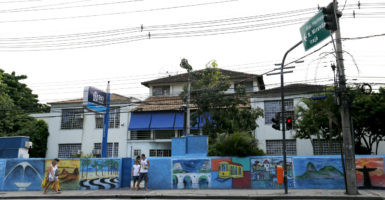Despite the geographic differences, Brazil and the United States have much in common: both are continental, diverse countries organized in federations with relatively autonomous states. This is why the failure of centralized education system in Brazil is a cautionary tale for American policymakers.
Twelve years ago, when his daughters’ eighth grade teacher compared St. Francis of Assisi to the confessed murderer Che Guevara, Brazilian lawyer Miguel Nagib decided he had had enough and started an organization called Escola Sem Partido (School Without Political Parties).
This incident was not an exception. In 2008, a Brazilian pollster asked students of both private and public schools about the context in which some historical figures had been presented to them in class.
The results are shocking: 86 percent said Che Guevara was introduced in a positive way, and 14 percent said neutrally. No negative views. Even Vladimir Lenin got a good result (65 percent positive, 26 percent neutral, and only 9 percent negative).
In the same poll, more teachers mentioned Karl Marx (10 percent) than Jesus Christ (6 percent) when asked about the public figure they admire the most. The No. 1 (with 29 percent) was Paulo Freire, a socialist educator whose most influential book lauds Fidel Castro.
The evidence of school biases is overwhelming. Nagib has said that, “the authorities were always conniving with the situation,” but now, he has some hope since Brazil’s Congress and state legislatures began to debate the problem.
But what has made the classrooms of such a large and diverse country an echo chamber of the same harmful ideology?
An honest answer cannot ignore the influence of the centralization of education. All schools must teach subjects dictated by the central government.
In addition to that, all the top 18 universities in the country according to the most respected national ranking are public, and 14 of them are run by the central government. Therefore, the government controls not only what is taught to children—it also owns the very institutions that form the intellectual elite, which write the school books.
Another problem: The Brazilian equivalent to the Standardized Aptitude Test is also administered by the federal government.
Meanwhile, homeschoolers sometimes have to fight unpredictable legal battles due to the ambiguousness of the legislation.
Brazil’s educational system is a living proof of the dangers of centralization. Homogeneity facilitates for political ideology to make its way into the classroom.
This has been particularly evident in the past few months, as the Brazilian government started to prepare new national standards. The history classes, for example, would exclude periods such as the ancient civilizations, the Renaissance, and the French Revolution.
Most Brazilians ignore that the solution might be not far from home. More than three decades after the beginning of a positive experience with decentralization of education and school vouchers in Chile, that record is unknown in Brazil. It shouldn’t be this way, since Chilean schools consistently outperform any other country in Latin America.
Brazil, on the other hand, is not doing well. In the Pearson Education Ranking, the country appears in the 38th position among 40 countries. A different study by the Organization for Economic Cooperation and Development puts Brazil in the 35th position among 36 nations. On the Programme for International Student Assessment, Brazil ranks 58th out of 65.
Besides the progress achieved by Escola Sem Partido, there might be a new reason for change. A more pragmatic administration is in control after leftist Dilma Rousseff was impeached. The new Ministry of Finance, Henrique Meirelles, has even endorsed the idea of school vouchers.
It is past time for Brazil to advance education choice for all students.






























